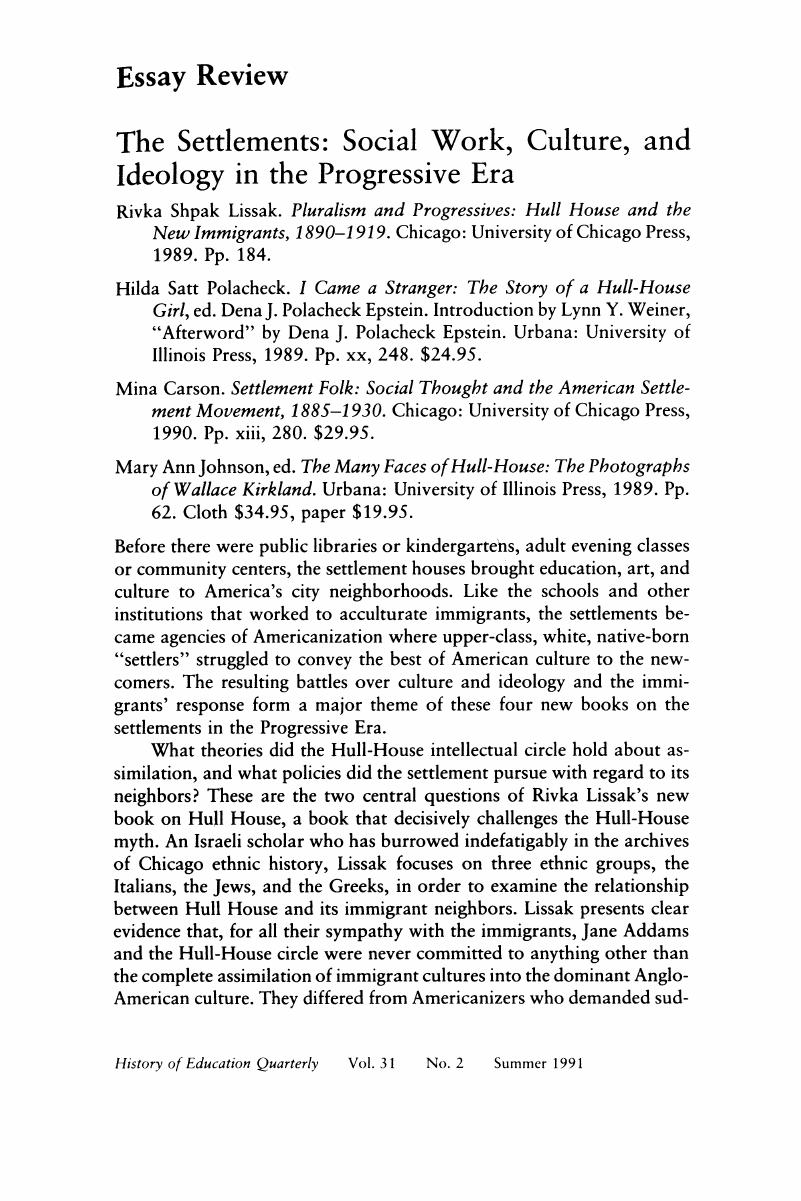No CrossRef data available.
Published online by Cambridge University Press: 24 February 2017

1. Sklar, Kathryn Kish, “Hull House in the 1890s: A Community of Women Reformers,” Signs 10 (Summer 1985): 658–77; Conway, Jill, “Women Reformers and American Culture, 1870–1930,” Journal of Social History 5 (Winter 1971–72): 164–77; Rousmanière, John P., “Cultural Hybrid in the Slums: The College Woman and the Settlement House, 1889–1894,” American Quarterly 22 (Spring 1970): 45–66; Hayden, Dolores, The Grand Domestic Revolution: A History of Feminist Designs for American Homes, Neighborhoods, and Cities (Cambridge, Mass., 1982), 151–79; Davis, Allen F., American Heroine: The Life and Legend of Jane Addams (New York, 1973); Sicherman, Barbara, Alice Hamilton: A Life in Letters (Cambridge, Mass., 1984); Cook, Blanche Wiesen, “Female Support Networks and Political Activism: Lillian Wald, Crystal Eastman, Emma Goldman,” in A Heritage of Her Own: Toward a New Social History of American Women, ed. Cott, Nancy F. and Pleck, Elizabeth H. (New York, 1979), 412–44.Google Scholar
2. Gabaccia, Donna, “‘The Transplanted’: Women and Family in Immigrant America,” Social Science History 12 (Fall 1988): 243–53.Google Scholar
3. Gordon, Linda, “Family Violence, Feminism, and Social Control,” Feminist Studies 12 (Fall 1986): 453–78.CrossRefGoogle Scholar
4. See also, Lissak, Rivka, “Myth and Reality: The Pattern of Relationship between the Hull-House Circle and the ‘New Immigrants’ on Chicago's West Side, 1890–1919,” Journal of American Ethnic History 2 (Spring 1983): 21–50.Google Scholar
5. Davis, Allen F., Spearheads for Reform: The Social Settlements and the Progressive Movement, 1890–1914 (New York, 1967; New Brunswick, N.J., 1984).Google Scholar
6. Barnett, Samuel A., “Education by Permeation,” Charities and the Commons 16 (5 May 1906): 186–88; Abel, Emily K., “Middle-Class Culture for the Urban Poor: The Educational Thought of Samuel Barnett,” Social Service Review 52 (Dec. 1978): 596–620.Google Scholar
7. See also, Trolander, Judith Ann, Professionalism and Social Change: From the Settlement House Movement to Neighborhood Centers, 1886 to the Present (New York, 1987); Davis, Allen F. and McCree-Bryan, Mary Lynn, One Hundred Years at Hull House (Bloomington, Ind., 1990); Crocker, Ruth Hutchinson, Social Work and Social Order: The Settlement Movement in Two Industrial Communities, 1890–1930 (Urbana, Ill., 1991).Google Scholar